Hi I have a question some of you could help me out.
My vector is temperature collected hourly:
a<-c(7.95, 7.8, 7.85, 7.6, 7.1, 5.55, 4.35, 4.1, 7.35, 10.7, 14.2,
17.25, 19.1, 19.8, 20.1, 20.15, 19.9, 18.95, 16.7, 14.4, 13.75,
12.1, 12.3, 11.4, 10.3, 8.55, 7.45, 7.05, 5.6, 5.95, 4.85, 5.3,
9.35, 12.7, 16.15, 19.1, 20.5, 21.05, 21.4, 21.4, 21.35, 20.1,
16.95, 15.8, 15.6, 14.95, 14.15, 13.85)
I want to determine how many events there are which a is above 20 and below 10 for a certain period of time.
Pictorially, this is what I am looking for. Here there are two events (blue and green) where temperature amplitude threshold was achieved. Result should be 2.
============
Another example:
Here temperature was below 10 & above 20 for at least 1 hour, two times (or two events).
Result should be 2.
Data for example 2:
b<-c(20.2, 20.55, 20.85, 21.7, 20.7, 18.7, 17.5, 17.4, 16.65, 17.15,
15.8, 13.85, 12.55, 11.45, 10.2, 9.3, 8.2, 7.4, 7.25, 6.65, 5.9,
4.75, 4.5, 4.15, 4.4, 6.25, 8.1, 10.35, 12.4, 14.3, 15.3, 16.3,
17.25, 17.25, 16.85, 14.45, 12.85, 11.35, 10.2, 9.1, 8.6, 7.35,
5.9, 4.85, 3.65, 3.3, 2.95, 2.65, 2.45, 4.85, 6.45, 8.25, 9.95,
11.1, 12.3, 13.2, 13.95, 14.05, 13.15, 10.35, 8.15, 6.6, 6.3,
6, 7.55, 5.85, 5.05, 4.75, 4.5, 4.75, 4.75, 4.55, 5.15, 8.45,
12.05, 16.35, 18.9, 20.55, 21.6, 21.45, 21.75, 21.15, 20.05,
17.75, 16.5, 18.2, 18.05, 17.95, 17.8, 17.55, 17.25, 16.95, 16.6,
16.35, 16.1, 16.25, 16.4, 17.1, 17.8)

